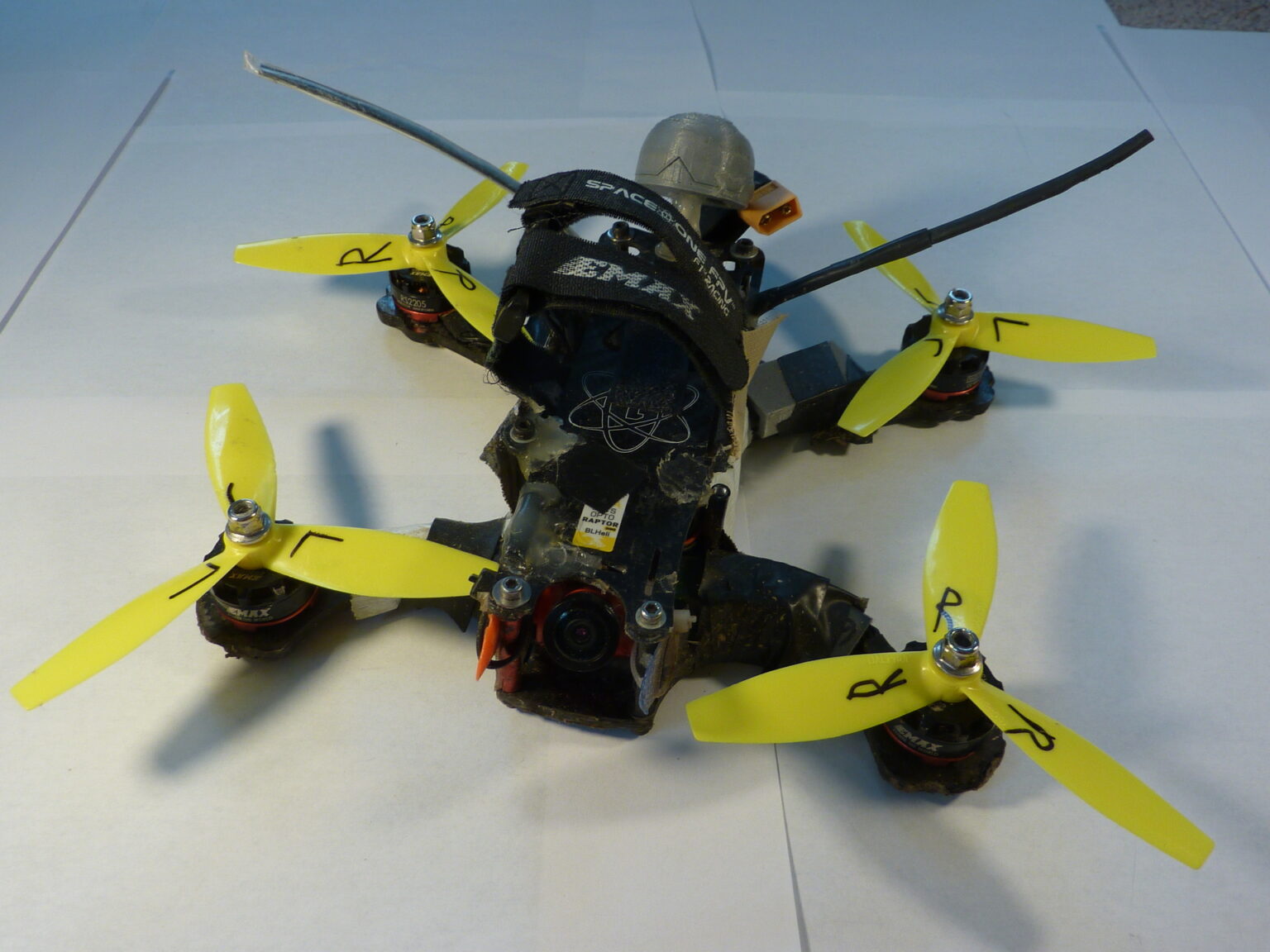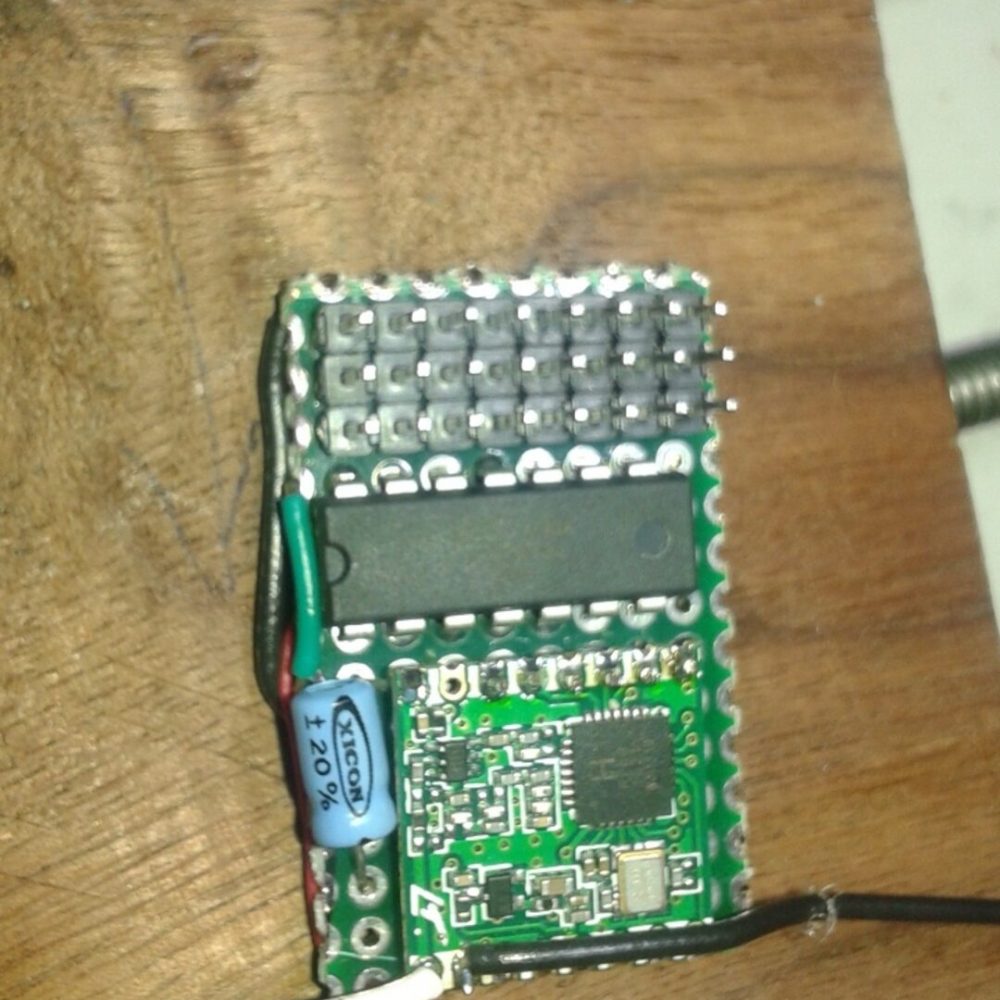Projects
This page has a selection of a few projects I’ve done over the years, some of the larger ones include an open source multimeter and FMCW radar, down to smaller ones like light up business cards and racing drones.
Hydra Meter - 2017-2023
Ongoing project to build a multimeter. Currently (April 2024) at the stage of fully functional prototype, capable of doing regular voltage, current, and resistance measurements. I’m working on improvements to the onboard software and paired desktop application now, and plan to do a major iteration of the case relatively soon.
- Standard Volts, Ohms, Amps measurements,
- 100mV-240V full-scale
- 10 Ohm – 1M Ohm full-scale
- 1.5mA – 15A full scale
- >3V diode test
- Isolated RS-422 interface
- Separable wireless display
- Modular ADC, PGA, onboard radio, and input module
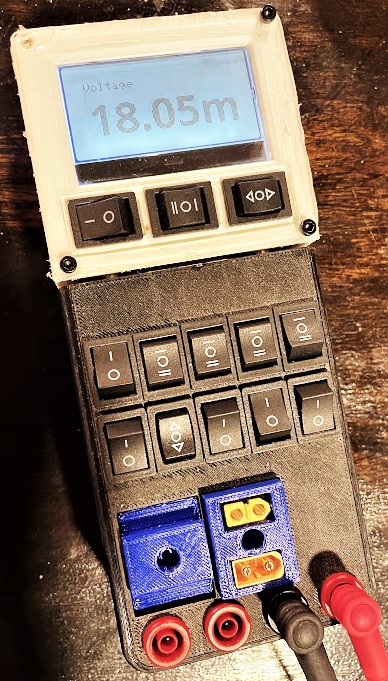
Senior Design Project
Acoustic Camera
Carnegie Mellon University - 2020
A phased array of digital microphones connected to an FPGA – capable of performing beamforming for acoustic imaging and basic sonar.
- 96 PDM digital microphones in an 8 * 12 grid
- Xilinx Spartan-6 FPGA with Gigabit Ethernet PHY to upload data to a computer
- Real-time and post-processed visualizations implemented
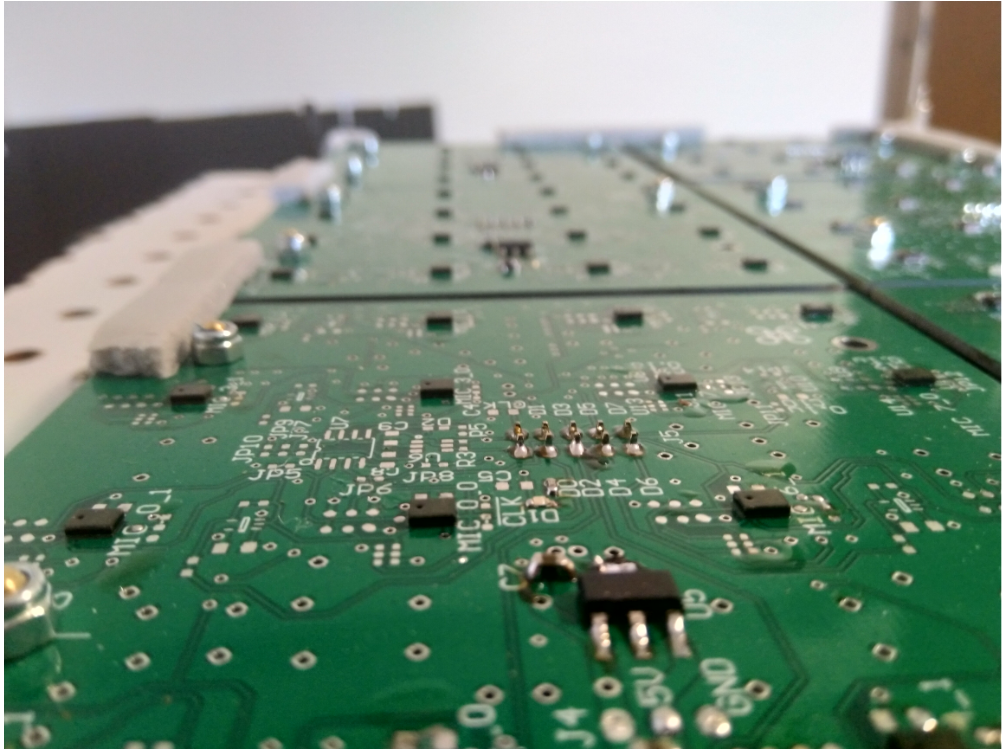
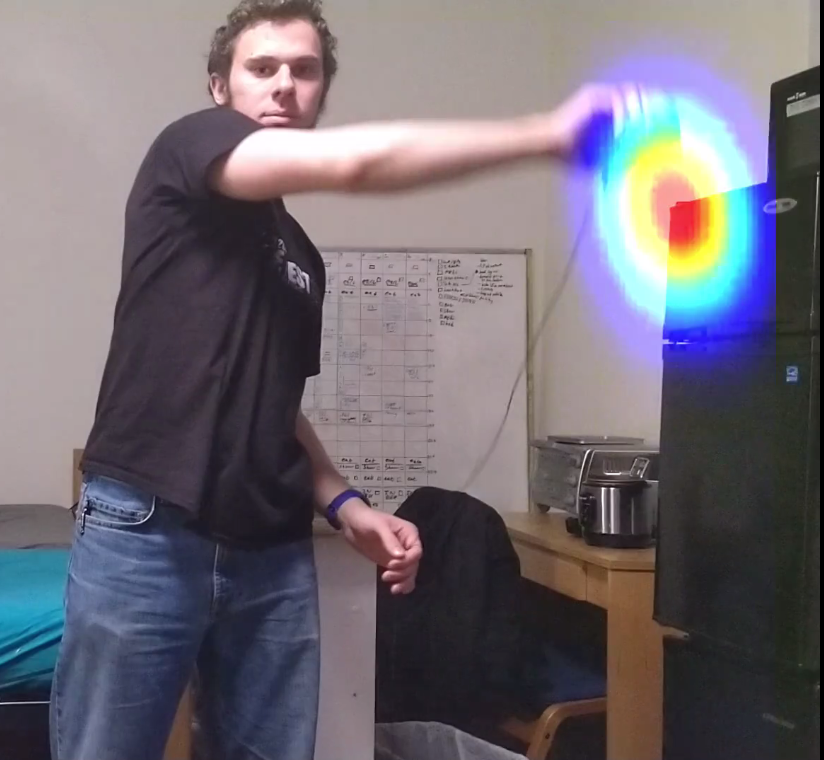

LLRISE radar
Internship project
MIT Lincoln Lab - 2018
The LLRISE radar is a simple FMCW radar operating at 2.4GHz, which is used to teach students how radars work and give some hands-on experience. Part of my job at Lincoln lab was to redesign the radar to significantly reduce the BOM cost by making a separate RF board with SMD parts, instead of using connectorized ones from mini-circuits. I also redesigned the sweep generator and digitization, to use an ARM microcontroller with an internal ADC and DAC instead of analog signal generator and microphone input on a laptop. Between these and a few other changes to the design, the cost dropped from around $450 to $100, and significantly improved performance of the IF section.
Keeping the RF board, with its stricter requirements and more difficult SMD soldering, separate from the IF board, allowed a common RF section to be used on multiple versions of the IF section, of which I made two. One was optimized for size and cost, and to allow the whole system to be folded into a smaller space. This used SMD parts, and a more compact connector arrangement. The second board was optimized for simplicity and to be easy for students, most of who had never soldered before, to assemble by using large, through hole parts.
Another goal of the project was to simplify the physical construction. The previous design was very large and entirely 3D printed, which was expensive, slow to make, and occupied the lab printers for a long time for each. A The new design has only five printed parts, which use very little filament and can be printed very quickly with no support. The remaining parts are laser cut, which was chosen as it is significantly faster and cheaper for large components. The assembly can also be performed in less than five minutes with no tools, where the previous design would often take several hours.
- 2.4GHz RF frontend
- FMCW pulse compression
- 100MHz total bandwidth
- 200Khz IF bandwidth
- Real-time waterfall plot, either RTI or doppler
- 1Msps interleaved ADC (DMA driven)
- 1Msps DAC (DMA driven)
(To clarify, this video refers to the LLRISE program, in which high school students assemble and used the radar system for a few experiments. I did not participate in that program, I designed the systems they are using in it, this just shows them being assembled and used).
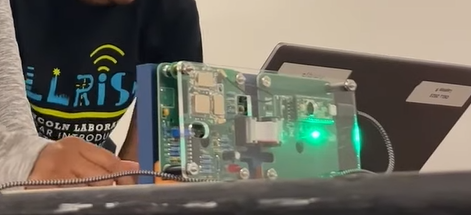
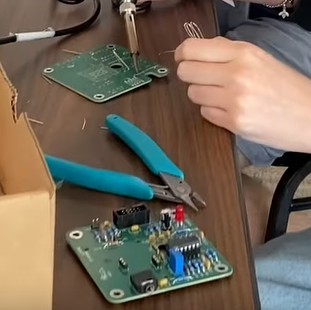

NASA Robotic Mining Competition
Iowa State University - 2016 & 2017
Designed, built, and tested control electronics for the twin robots entered in the 2016 and 2017 NASA RMC by Iowa State.
2017
- Zynq 7020 based control system
- White box on left side of the rear of the robot
- Power management system – Smart Management Of Robot Energy (S.M.O.R.E.)
- Monitors and controls power for all motors, sensors, and the Zynq
- Supercapacitor backup to allow graceful shutdown when power is cut
- Black, brown and white box (sort of resembles a s’more) on the right side of the robot
2016
- Control functions divided between Raspberry pi, Spartan 6 FPGA, and ARM microcontroller
- Designed, ordered, assembled, programmed, and tested in less than one month
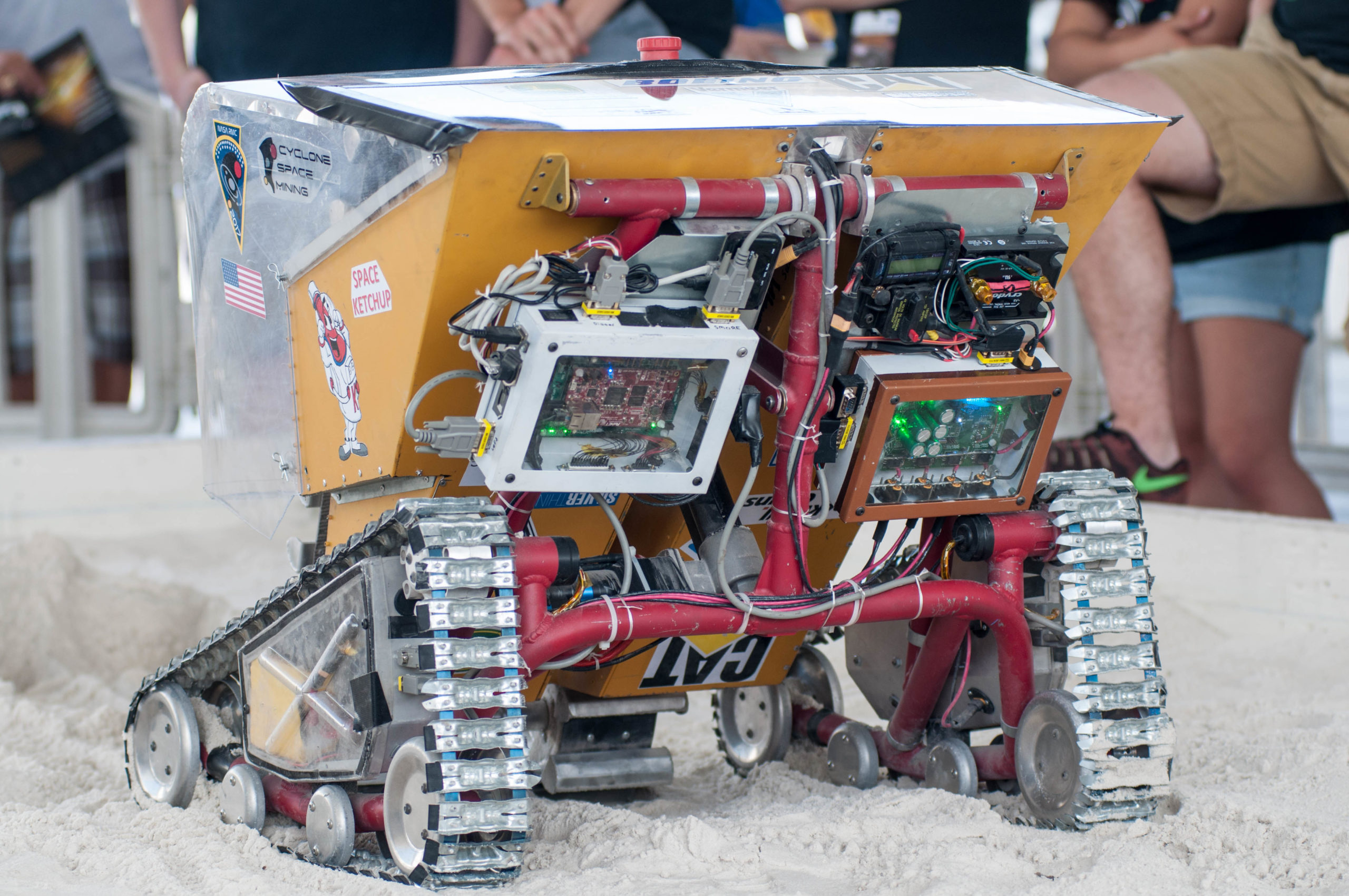
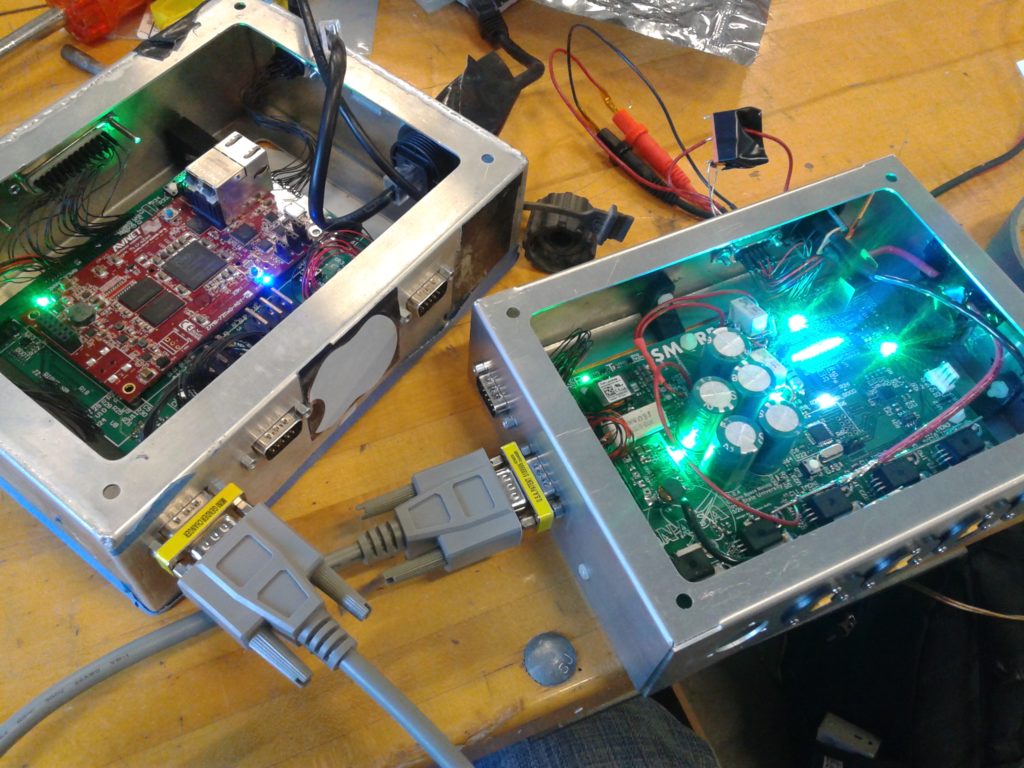
Colibri
MIT Lincoln Laboratory - 2018
Colibri started as an Intern Innovative Idea Challenge (I3C) project between another intern, Peter Sharpe and I. It is a new type of multirotor that uses a single, large rotor for most of its lift, and three additional fixed rotors for control. The initial proof of concept was designed to demonstrate the layout and control system, and secure funding. The second prototype was built to demonstrate the feasibility of using a gas engine to directly power the main rotor.
Initial Proof-of-Concept
- 20″ main rotor
- 285 KV main motor
- 6S, 2200mAh battery
- 140W hover power
- 1.4Kg
Second Prototype
- 48″ main rotor
- 1.2 HP 2 stroke engine
- 6S, 1000mAh battery
- 11Kg
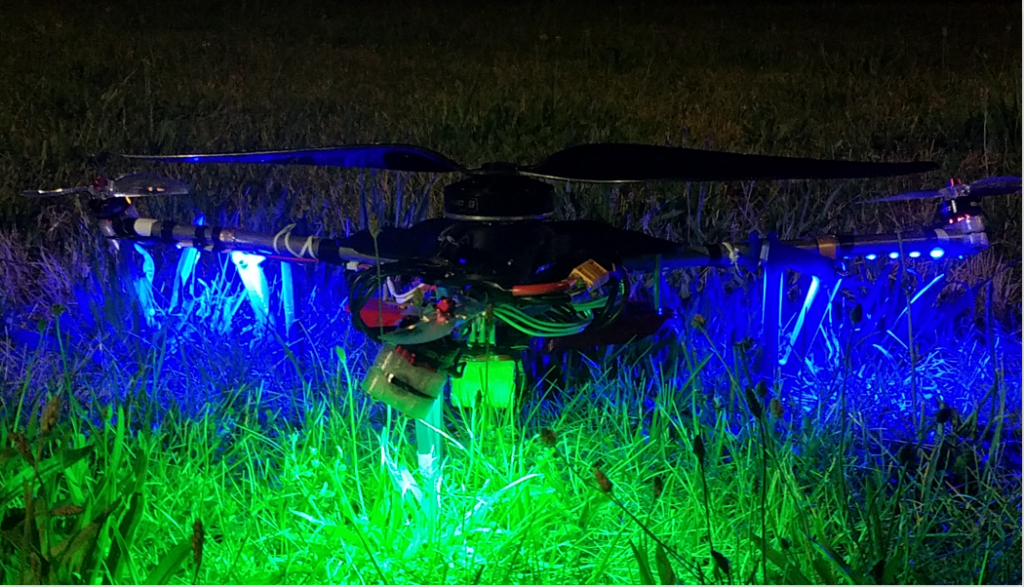

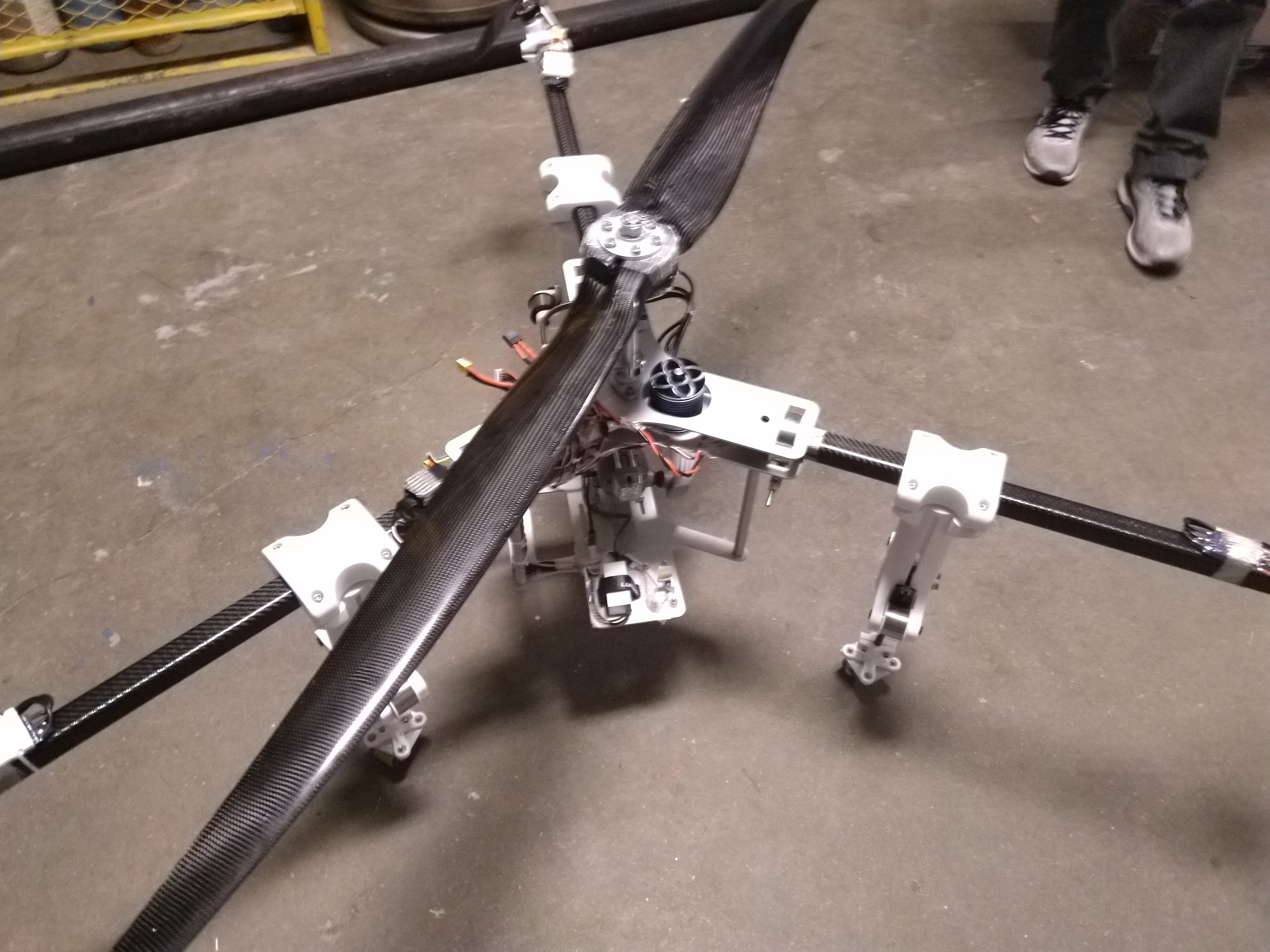
The MacroProcessor - 2014
This was a processor composed of discreet, 74-series logic chips and assembled on a wire wrap board. I designed and built this in High School as a way to learn about digital logic, processor design, and assembly programming. When starting, I had no experience with any of these, but was able to learn them together during the course of this project. The end result was not particularly useful or capable, since it’s purpose was entirely self-educational. In 2015, I ported the design to Verilog and got it running on an FPGA, as well.
- Clock speeds reaching up to 100KHz
- 7 instructions
- One program count register, two general purpose registers, two output registers
- 128 bytes of working memory
- 8 bit architecture
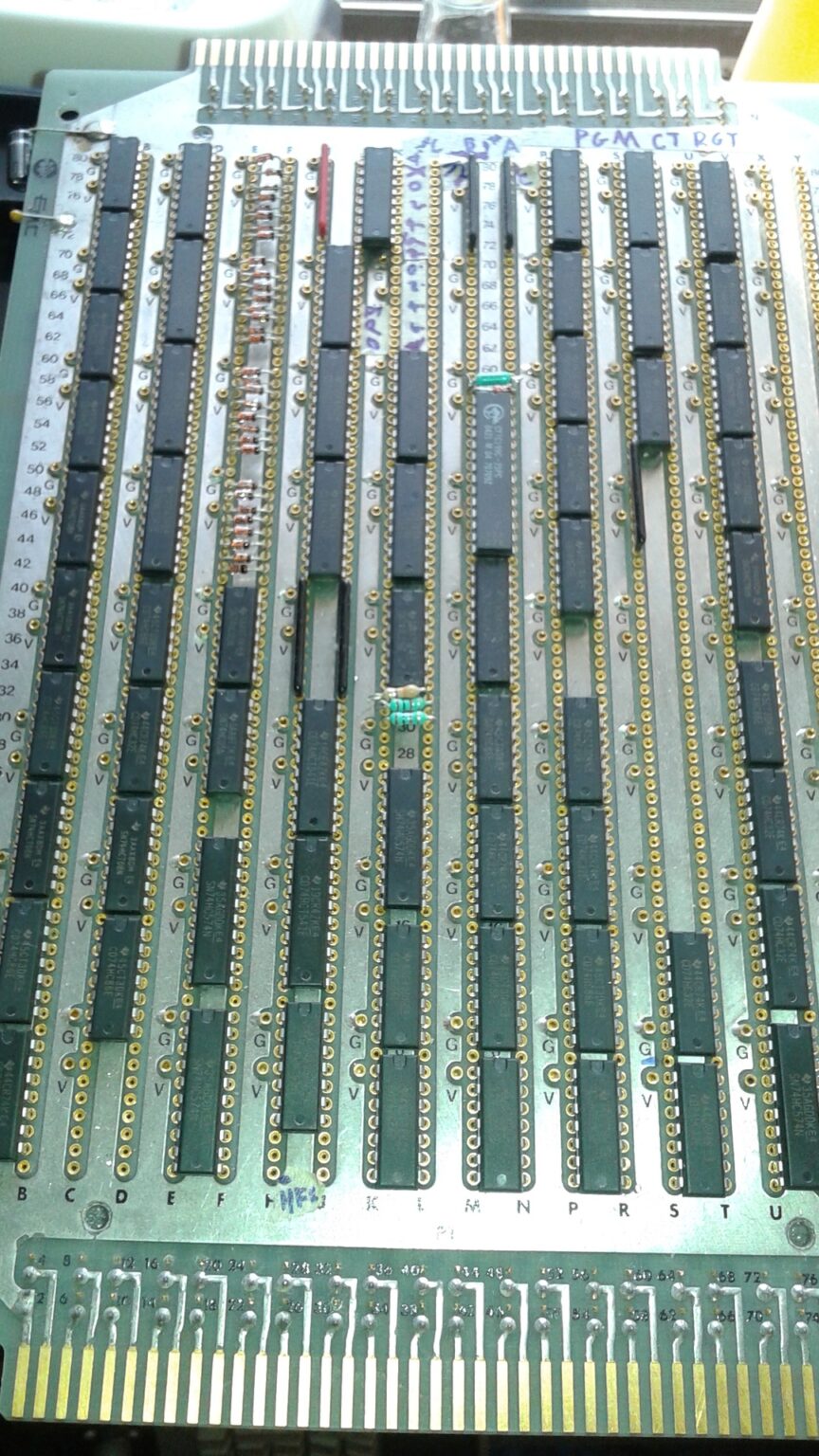
Custom LED business cards
I designed and built these spring 2020 to make an impression when applying for jobs at my college career fair. They light up when held.

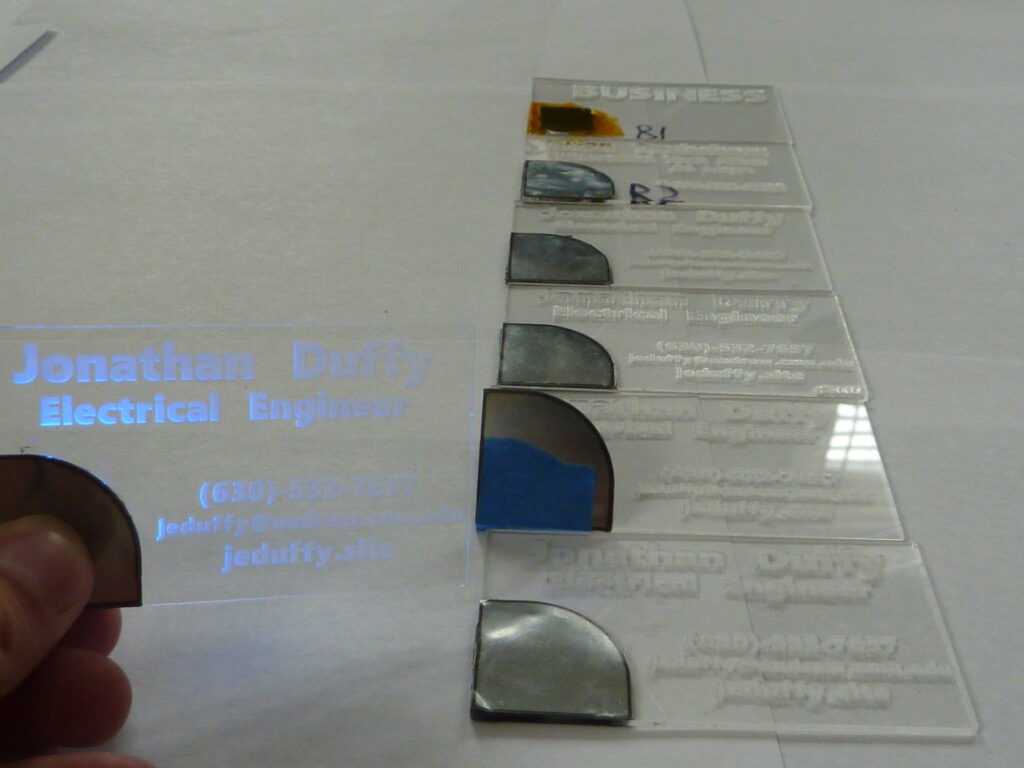

Laser galvonometer controller
Designed and built in December 2019, this was an analog PD-loop feedback controller for a high-speed (20kpps) laser galvonometer.
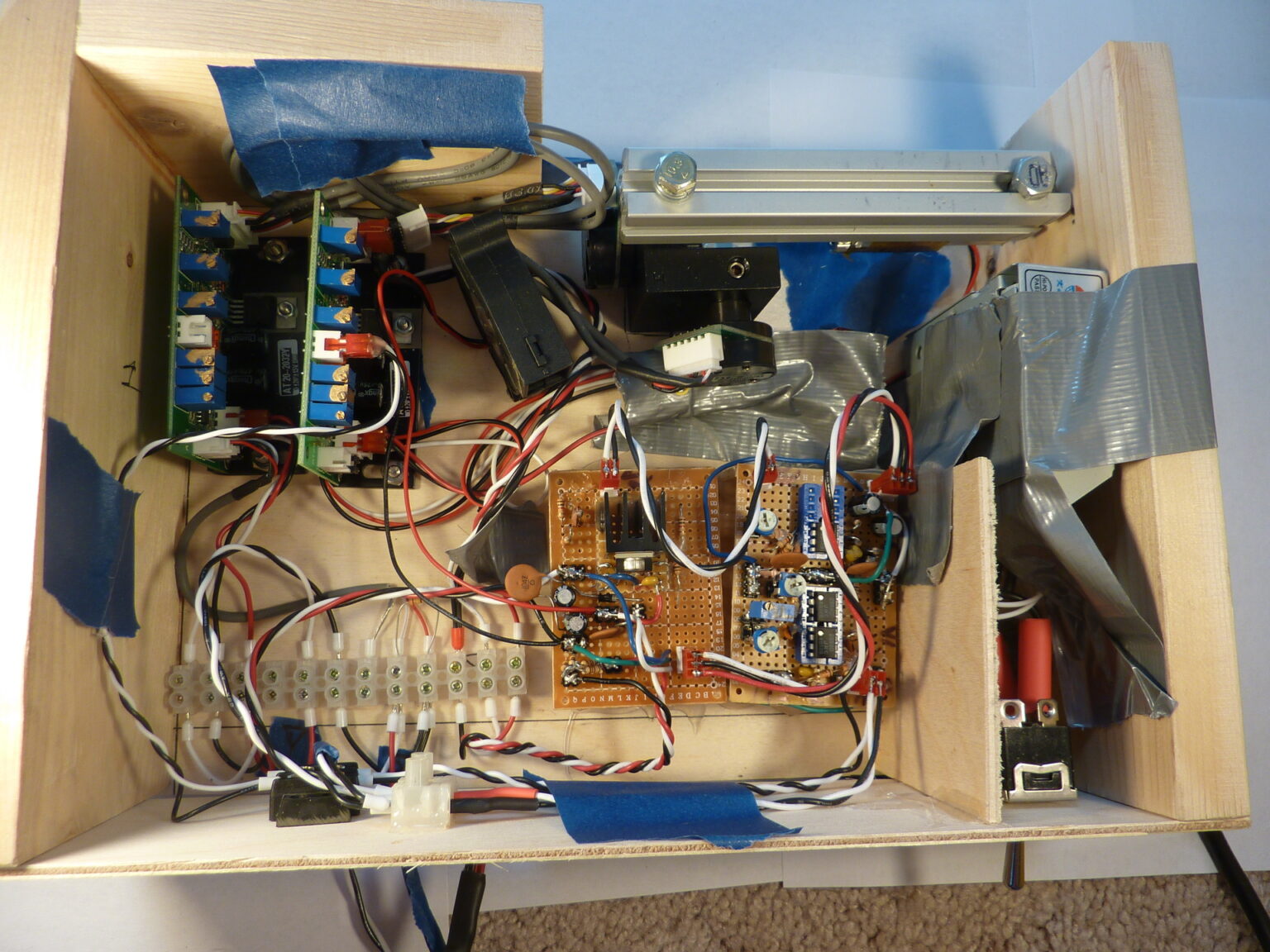

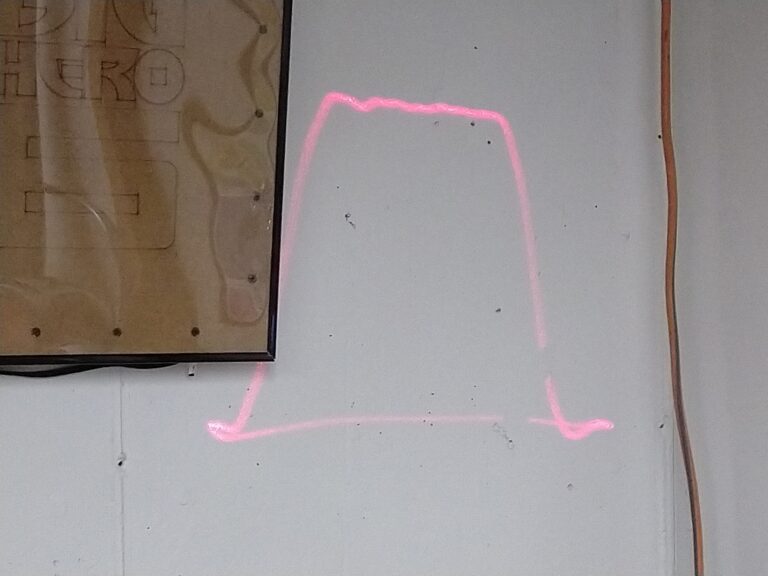

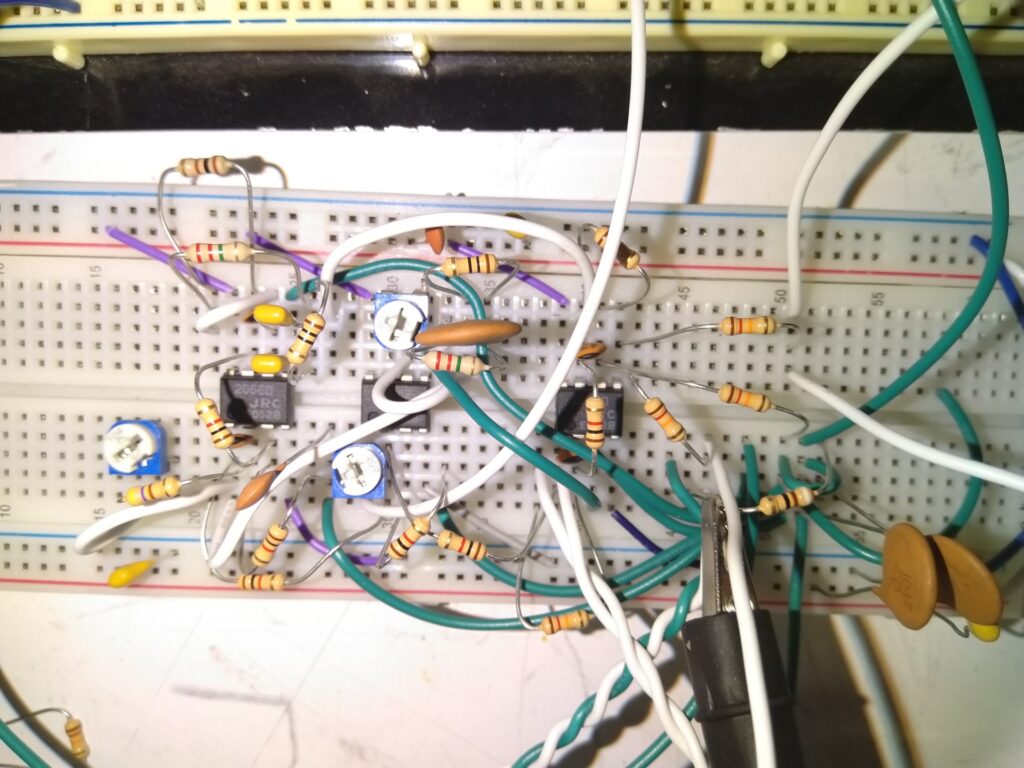
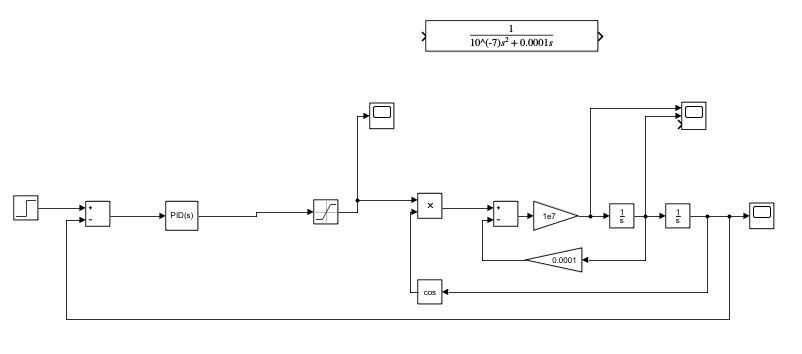
Racing Drones
I've been interested in drone racing since 2016, and have built a number of different racing drones over the years since. All feature radio receivers I designed and built, based around the RFM69HCW radio module.
